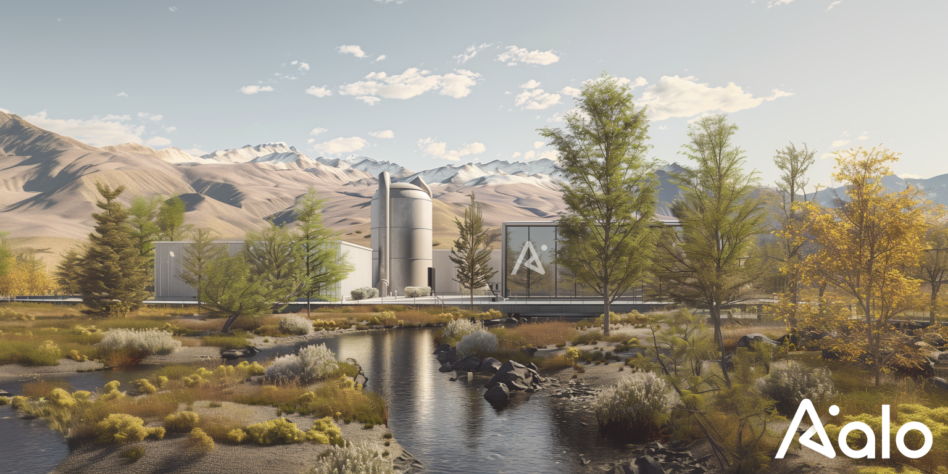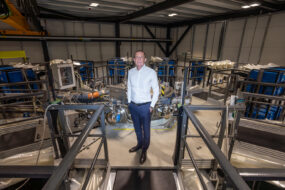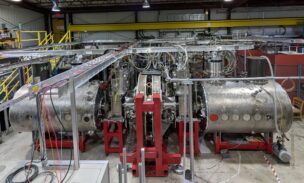To build a great microreactor, you need a great team.
Matt Loszak, CEO of Aalo Atomics, began a new nuclear microreactor company a year ago with visions of cleaning up the Earth while enabling the growth and commercial success of energy tech. Over the last year, the company has grown from two to 15 people (and plans to double its headcount again soon), submitted pre-application materials ot the NRC, and recently moved into a facility where it plans to stand up its first test reactor.
Things are moving fast over at Aalo, and Ignition caught up with the guy in charge.
This interview has been edited for length and clarity.
Ignition: What got you interested in nuclear energy?
Loszak: So for me, my background was originally in engineering and physics. I did take some nuclear courses in university, but at that time, I wasn’t entirely sure what I’d want to do with that degree. I loved trying to understand how the universe worked.
On the flip side, I grew up in Ontario, where we’re 60–70% nuclear-powered. And one of my earliest memories when we were transitioning to nuclear is that I used to have asthma, and that went away when we transitioned to nuclear. And that was pretty palpable. I used to have trouble breathing. Toronto used to have something like 60 smog days a year, and then it went down to zero when we transitioned from coal. So it’s like, yes, nuclear can help with global warming and all these other things—energy independence, and ushering in this fabulous future of abundant energy—but at a very basic level, it can also just clean up the air, which I think is kind of an underrated benefit.
I kind of got the entrepreneurial bug. So I did 10 years working at software startups, but I always kind of wanted to get back into hardware. That would kind of be my holy grail, is to combine the business and the software experience with my kind of roots in science and engineering. I wanted to do clean tech. So I spent six months talking to every company I could in fusion and fission, storage, you know, solar and wind, whatever, and every conversation kind of reinforced in my mind that I felt like fission was just the best solution for so many of our problems. And yet it was this extreme underdog. It’s just such an incredible hidden secret just how incredible nuclear is, and yet, it was so misunderstood because of this curtain of misinformation that was largely generated in the ‘70s and ‘80s by the anti-nuclear movement that tried to lump in the energy source with the weapon.
I want to help nuclear get the recognition and the adoption it deserves. And I think that would be a huge boon for humanity.
You put out a lot of writing and content about the potential benefits of nuclear energy, and marketing and publicity generally has been a priority for Aalo in general—tell me about why that part is so important for you.
Engineers have this nasty habit of thinking that the only thing that matters is the technology, and this is kind of true of any industry, but it’s especially true in nuclear where people think you build it and they will come. You have to get people on and inform people on why you’re doing what you’re doing. We’ve been thinking a lot about how we communicate. We try to wrap information into digestible content that has a good hook that makes you want to plug in and actually learn about it, because that’s the only way you can get people to learn, is if it’s mass-shareable and if it’s interesting to any random stranger who sees it.
How do you think about building this very complex kind of a business from a standpoint where you’re trying to make things economically viable and affordable in the long term?
I think first of all, it’s worth pointing out that if you look at some of the most successful software startups in recent years, like Airbnb or Facebook or Uber, and you compare that to the most successful hardware startups, like SpaceX or Tesla, it turns out like the amount of money that they raised from venture was actually kind of similar. So it’s not necessarily true that deep tech requires that much more capital as a whole. But I think it is true that in deep tech, there’s a lot more ways to fail.
In a deep tech startup, either you make it through the valley of death and you get the long-term bankability or profitability, or you maybe you struggle to have to pivot, or you find some way to become a cockroach and survive until you can figure out how to get to profitability or bankability, or you just die. So I think that’s kind of the challenge.
How do you think about structuring Aalo to reach that point of bankability or profitability?
Nuclear has get so many different things right. It’s crazy how much there is. So far, what we’ve talked about is the reactor technology and the marketing, but then you’ve also got the licensing, then you’ve got the civil structure, and then you’ve got the financing, then you’ve got the sales, and within all of that, you need to make sure that you’ve got people that are very experienced who have done these things before, and then you’ve got the construction, and then operation and the maintenance, and then you’ve got maybe decommissioning, and the list goes on. And this sounds overwhelming, because there’s so much stuff you have to get absolutely perfect to really hit the good economic numbers.
If you can create a company that can attract the best people, then that’s really the best shot you can have. So what I try to focus on is that Aalo has the right culture and financing to recruit the best people in each of these complicated dimensions.
You’ve scaled the team at Aalo from two to 15 people within the last nine months. Tell me how that growing process has been for you.
What I learned in my last startup is that in the early days when you’re recruiting, you really want to tap into people’s networks. Find incredible people, and instead of putting up a job posting, tap those networks for this incredible filter and time save. So that’s kind of how we’ve built the team so far. With the Series A now closed, we’re really expanding our scope of what we’re looking to de-risk to include product definition and financial modeling and sales and more marketing, and so we’re really excited about the path for the next four months of executing with this new capital.
You’re scaling to 30 people by the end of the year—what proportion of that will be in engineering?
Roughly half. You can kind of think of it as like 40% engineering, 40% hardware, and then like 10 or 20% as much about the miscellaneous things and office administration.
You kind of had this jumpstart too on the regulatory side, filing with the NRC. Can you tell me a little bit about why you decided to go that direction so early?
We have a pretty great VP of Regulatory Affairs, Amir Afzali, who helped pioneer the risk-informed, performance-based licensing method that a lot of nuclear startups are using for their reactor designs, especially a lot of advanced reactor vendors. So with his guidance, we just realized the importance of really early engagement with the NRC. We laid out our regulatory engagement plan, and that describes how we intend to prepare to submit our permit, and then have it be reviewed, and then start construction on that project shortly thereafter.
Now that you’ve raised this $27M Series, A, what’s the plan for building in the short term?
One of the big things that we’re going to do with the Series A is build a non-nuclear prototype, so that’ll be like a full scale version of the reactor that doesn’t have any nuclear fuel, but it has kind of resistive heating elements to simulate the heat generation. And we’ll also have our pilot reactor assembly line here. So we want to use this opportunity to demonstrate that as well. And we’ll also be sub-component testing and so on.
Lead Reporter of Ignition





